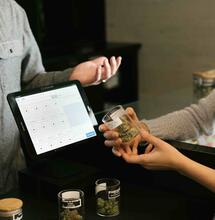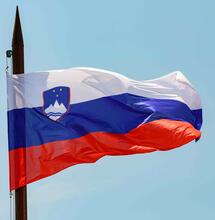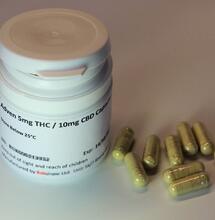First there was light!

Light is the most important aspect in our grow space. There are other aspects that are required in order to have a successful grow, light however is the single most important aspect as without it nothing else can function. So what lighting options are there available to a grower setting up his grow-space?
Light is the most important aspect in our grow space. There are other aspects that are required in order to have a successful grow, light however is the single most important aspect as without it nothing else can function. So what lighting options are there available to a grower setting up his grow-space?
Light is the most important aspect in our grow space. There are other aspects that are required in order to have a successful grow, light however is the single most important aspect as without it nothing else can function. So what lighting options are there available to a grower setting up his grow-space?
Generally speaking, there are three distinct light sources that have been successfully used in order to grow cannabis plants. High Intensity Discharge (HID) lamps, Compact Fluorescent Lamps (CFL) and Light Emitting Diode (LED) panels. HID lamps are the traditional growing lights, what you will see in most grow reports. These lamps operate by having electricity conducted through a gas chamber inside the lamp. Their traditional use was to provide light in large areas and outside spaces. If you take a look outside your window, you are very likely to see one of them lighting your street. They have been available for decades and were the first type of lamps that was used for growing cannabis. However, they’re nearing to an end as production of such lamps is expected to end in the coming years, since they’re extremely expensive to run and LEDs are replacing them in most common applications.
A 1000 Watt HID lamp.
CFL lamps are the lamp-bulbs that since the mid-90s most people started using in their houses. Their history goes way back, however it was mass production in the 90s that made them available to households as an economic alternative to the typical lightbulb that was being used in lighting applications. Under the same technology and application to the CFLs are also the Tube lamps, a light type that you’ve mostly seen in office spaces, hospitals and so on. Tube lamps were available before the common CFLs, however they are not as easily installed thus making them less appealing to starters. You will mostly hear Tube lamps being referred as T8, a commonly used 30W model. Growers started using this type of technology mostly to save money on electricity, and secondary to reduce problems occurring when using HID lamps.
A common CFL lamp.
Nowadays a different technology is gaining momentum. LED panels, utilise diodes (i.e. little lamp fixtures) that produce light via a chip. The technology has been around from the 60’s but has been commonly available during the 2000’s through mass production, and now can be seen everywhere. The lights on your car, your TV set, your keyboard lights, the list goes on. A very cost-effective light source but still very expensive regarding large-scale applications. Very flexible technology that allows everyone with basic technical knowledge of electronics and mechanical construction to create his own DIY-panel. They have been used by growers during the past decade, but they only started taking off in the last couple of years.
A single LED.
LEDs and growers didn’t hit it off from the start. Instead one could easily say that the initial attempts at growing with LEDs were pretty much disastrous. The first panels in the market were amazingly expensive and provided horrendous results. Underachieving and burned plants were common occurrences to such an extend that shattered LED respectability in the growing community. The initial attraction was the expectedly reduced electrical consumption but manufacturers at the time failed to imagine an original way to utilise the technology. Instead of focusing on different growing aspects and techniques they tried to just replace a traditional HID lamp with a huge panel in it’s place. That gave birth to the creation of huge panels whose price tag was enough to avert potential growers.
| A LED light bulb for mainstream lighting application |
With time and as LEDs started being used into household application such as lighting, better while LEDs started being produced. Diodes became more powerful and way cheaper. Several manufacturers at that point started considering different spectra based on white, not on monochromatic approaches, and created panels that started showing steady results, enough to be considered as a good alternative to HID lamps.
Growing with HID lamps.
Most growers, including myself, started growing with HID lamps. The typical set-up would incorporate a ballast, a reflector and the lamp itself. One square meter area would require a 400 Watt lamp to cover it; with the added 10% loss from the ballast the total electrical consumption would be at around 440 Watts per hour. HID lamps have a ratio of electricity converted to light at about 11%, reaching to 13% for good brands. That would mean that at the very best you receive 50 Watts of light in your one square metre tent. What’s unfortunate is that you also get 350 Watts of heat produced by the lamp which can increase your tent temperature over 10 C on top of the ambient temperature. This problem can be reduced by using a cooltube reflector, a device that’s used to such the heat out of the lamp and dispense it outside the grow-tent. A cooltube partly solves the problem but extra installations would be required to run it.
Do HID lamps grow nice and productive plants? Yes they do, there can be no argument against that. If electrical consumption is of no concern and you got a healthy budget to accommodate serious climate control, then by all means go for it. That would mean that you have to pocket the bill to run air conditioning, lamps, and auxiliary equipment like oscillating fans. Such investment makes sense only for commercial growers, not for the average Joe who’s growing for his own consumption. Another way to go around the heat that’s produced from HID lamps is to have your lights on during the night. The average European apartment during the night has a temperature of about 17 degrees that would rise up to about 27 inside the grow tent, an acceptable temperature if your lows don’t go below 21. Still however, growers using hydroponics could find themselves struggling with water temperatures.
A cooltube reflector.
Another problem with HIDs, rare but not of less importance, is fire hazard. There is a small possibility that the lamp might explode, messing up your grow space and exposing your house to fire hazard. Your wife will not be happy, nor would your neighbours! There are some precautions you can take to avoid the danger, the best one is being there while the lights are on and keeping a constant eye on things. Making sure that there is nothing flammable close to your tent is another one, and comes without saying that your grow-tent has to be very clean (no dried up leaves etc.)
| A CFL lamp mounted on a reflector |
Growing with CFLs / Tube lamps.
Another popular light that has been used by home growers. Readily available, no need to have a lot of parts as when growing with HIDs, no fire hazard, better temperature control... what’s more to desire? Well, nice buds really, and here lies the problem.
Despite being cost-efficient and not being hazardous, CFLs don’t come up with nice results when flowering is concerned. CFLs are mostly used by beginners as they are available in every supermarket and they are very easy to install and use in small spaces. However, they’re way behind when it comes to flowering plants. Along with Tube lamps they can be successfully used for cloning and the initial stages of the vegetative cycle, but that’s as far as it goes. Once you switch to flowering, might as well change your lights.
Nevertheless they do represent an easy solution for a micro-grow under a very limited budget. Most CFL grows are done by beginners who are experimenting with closet grows before investing more money. The grower should expect a nice initial growth under CFLs and/or Tube lights, plants will actually be better off under them for the first week instead of being under a HID lamp as at a young age they are quite vulnerable under intense light and heat. CFLs come out under all white spectra available while Tube lights are mostly Cold white (often referred as daylight white at over 6000K colour temperature).
CFL growing is on its way to history books. Some people might keep on using them for clones and seedlings before putting up an HID but that’s as far as it goes. Growers that attempt a full grow under them will find themselves disappointed at the end and will either switch their lights or give up growing all together.
Growing with LEDs.
There is not one single way in which to write about growing with LED panels. The reason for that is that unlike HIDs who are standardised, LED panels come in a huge variety of different types and sizes. A 30 watt panel will not be treated in the same manner as a 200 one. Differences also apply when it comes to passive and active cooling.
Generally speaking and assuming you managed to get some decent panels you should expect a reduced electrical consumption when comparing with HIDs, much better environment control due to less heat produced, while at the same time achieving the same results. LEDs convert about 33% of electricity to light. In theory, 180 watts of LEDs should be enough to replace a 400 watt HID. This also means that in such a scenario only about 130 watts will be converted to heat instead of 350 watts.
Another advantage of LEDs is that they emit heat backwards, not towards the plants. This is because they operate with a chip which is based at the base of the light and means that the heat is much better dissipated into the environment and absorbed by the air extraction. Hence, plants can reach very close to the panels and not suffer due to heat as they would under an HID grow. Comes without saying that there is also no fire hazard when growing with LED panels.
Being a micro-grower and using LED panels is a no brainer really. One can achieve the same results as with HIDs with much better environmental conditions and without any worries that the house will burn down. Your electricity bill won’t go off the roof, and your plants will be nice and healthy. The only problem is the increased initial cost for purchasing the panels, which can be quite steep comparing with HIDs and CFLs.
Final thoughts.
If you want to grow commercial, use HIDs. If you just want to try putting a plant in the closet and see how things go, buy a CFL from the supermarket with an extension cord and give it a go. However, if you want to grow nice plants without footing a huge electricity bill, do your research and buy some good LEDs that will last for years.



